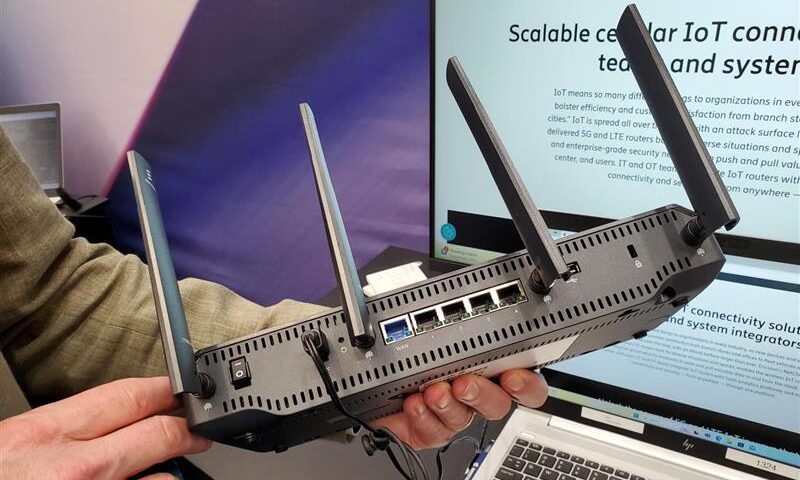Terrestar unveils new technology providing cell phone access to space-based internet – celebrates upcoming launch of new satellite constellation.
After 24 years, the Canadian Telecom Summit has solidified its place as a hub for leaders taking charge of our national connectivity infrastructure. It’s no secret that high speed internet has become a necessity for everything from public safety to entertainment. Attendees explored the future of those connections – not only through the lens of emerging technology, but also from the perspective of a country deeply invested in sovereignty, equality, and innovation.
Speakers from all over Canada and the world brought insights into the nations investment into those three pillars. As a key part of the telecommunications landscape in Windsor-Essex, CWE has made it our mission to keep our finger on the pulse of the industry; providing stakeholders with valuable insight into the future of our network. This year, ICT Research Analyst Aislyn Laurent attended on behalf of the community – sharing her perspective on the most high-impact topics covered during 2025’s conference.
A Commitment to Rural Connectivity
Regulators, innovators, leaders, and community members alike put a spotlight on the digital divide, calling for better connectivity options for everyone. More than a call for equal opportunity, the urgency comes as a response to a dip in economic productivity (value produced per hour of work per Canadian). On the other side of the coin was an ongoing debate about the viability of wholesale pricing. Smaller ISPs and even large carriers looking to expand called for the government to require the country’s biggest telecom companies to share their internet lines (for a price). Others pushed back, saying more regulation might prevent expansion and investment.
Surrounding those conversations is one about affordability. Studies are showing that internet prices are down significantly, but not everyone is feeling the love. Many customers still insist prices should be lower, and service options need to be more competitive. Providers think those concerns might better reflect other financial pressures and call for stronger messaging around what they see as an overall improvement.
An Exploration of World-Class Service Offerings
Multiple speakers talked about how market saturation is changing how they engage with their clients. They pointed to an increase in acquisitions across the board as a sign that carriers are looking for new types of products to offer. Some options include platforms designed to be built upon by businesses, AI tools, and managed cybersecurity services.

Telecom hardware provider Ericsson showcases new private wireless network technology; a gateway with multiple ethernet ports displayed here. The Device is capable not only of wired connections, but also running simple scripts used in edge computing deployments, for example.
An increase in collaboration with European partners is expected in response to the instability in our relationship with the US. Not only that, but there was a strong call to make internet infrastructure a ‘Nation-Building Project’. Concerns were tabled about the sovereignty of our current infrastructure, and about how primary connections are not enough to protect Canadian interests (strong redundancy options are non-negotiable). Everyone is looking for more (and better) home grown connectivity solutions.
A Need for Sovereignty and Security
One response to those concerns came from domestic satellite service provider Terrestar, who debuted a new device designed to provide cell phones with flexible, on-the-go access to space-based internet. They also mentioned getting approval to launch a new satellite constellation, though they didn’t offer details on where the new coverage area would be, save for that they ‘hope to service the arctic’ sometime soon.
A sharp increase in AI-based cyber-attacks made experts speak up – asking organizations to educate staff on how to vet incoming messages. They pointed to voice clone models and massive increases in the volume of convincing phishing emails as a major worry. Attacks are now much easier and faster to execute, meaning criminals have a lower recovery time and a higher success rate on their first try. In addition to protection against AI fueled threats, there were conversations about the need for quantum safe encryption. Carriers are among the most vulnerable to ‘harvest now, decrypt later’ type attacks, so it’s important to start preparing for new and bigger threats now.
A Vision of Ethical, Trustworthy AI Tools
AI tools aren’t just a threat – they’re an attractive option for legitimate businesses hoping to optimize their workflow. There was also plenty of discussion about using the rich network data carriers already collect to train new models. Speakers equally emphasized the need to use data ethically and to create policy, procedures, and governance around the use of AI in the workplace to keep sensitive information safe. Trustworthiness of AI came up several times, with experts saying all results must be vetted by human workers, as LLMs are likely to hallucinate even after careful tuning. ‘Trustworthy AI’ looks like models with transparent training and data storage, with verified results and published accuracy rates.

It’s exciting to see what the future looks like for something as foundational as connectivity – and it was incredible to be in the room with the most influential voices in the industry. Theres no doubt that no matter where your home base is, it’s important to make sure there’s access to high quality, affordable, home-grown internet. Beyond the connection, it’s important that we examine how we keep our data safe and leverage new tools ethically. CTS 2025 showed us an optimistic picture of the digital future Canada is headed toward, and we can’t wait to be part of it.
Connecting Windsor-Essex is a non-profit organization helping teams across the region connect, secure and innovate. Find out how CWE strengthens IT teams by learning more about membership today.


